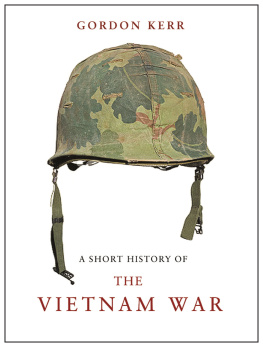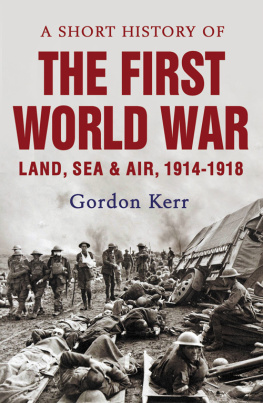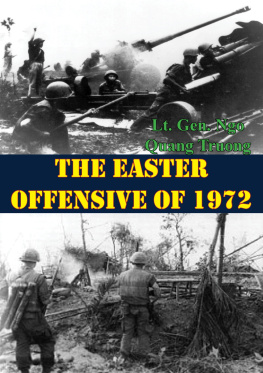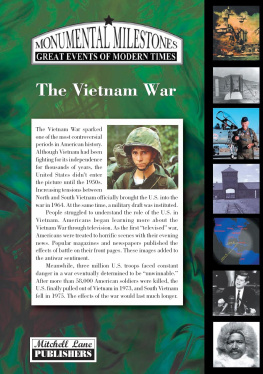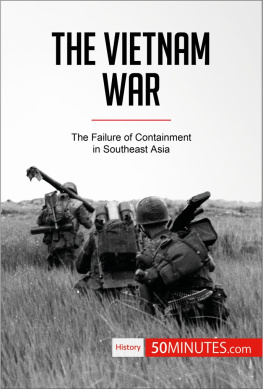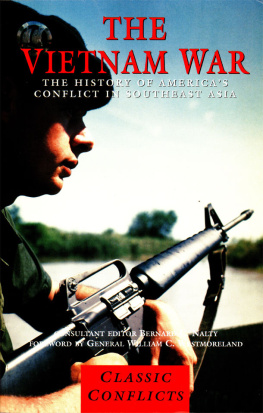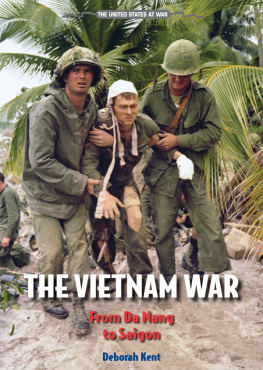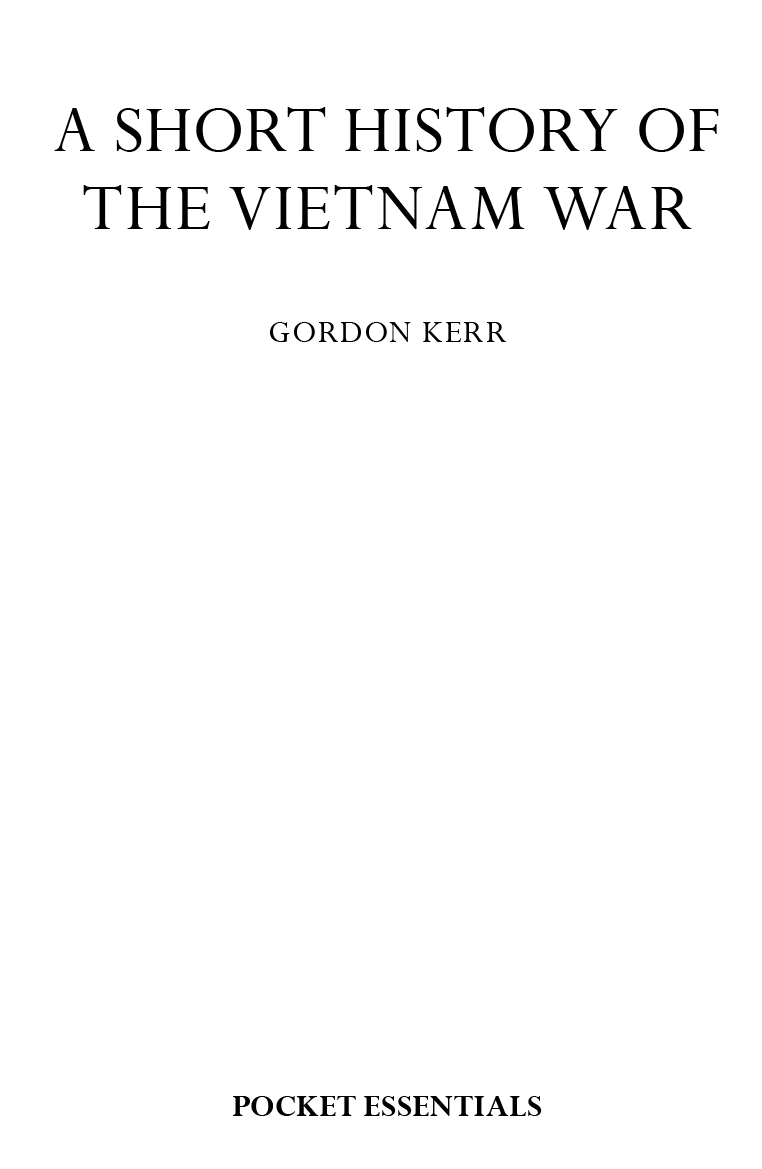A SHORT HISTORY OF THE VIETNAM WAR
On 8 March, 1965, 3,500 United States Marines of the 9th Marine Expeditionary Brigade made an amphibious landing at Da Nang on the south central coast of South Vietnam, marking the beginning of a conflict that would haunt American politics and society for many years, even after the signing of the Paris Peace Accords in January 1973.
For the people of North Vietnam it was just another in a long line of foreign invaders. For two thousand years they had struggled for self-determination, coming into conflict during that time with the Chinese, the Mongols, the European colonial powers, the Japanese and the French. Now it was the turn of the United States, a far-away nation reluctant to go to war but determined to prevent Vietnam from falling into Communist hands.
A Short History of the Vietnam War explains how the United States became involved in one of its longest wars, a conflict that, from the outset, many claimed it could never win. It details the escalation of American involvement from the provision of military advisers and equipment to the threatened South Vietnamese, to an all-out shooting war involving American soldiers, airmen and sailors, of whom around 58,000 would die and more than 300,000 would be wounded.
Their struggle was against an indomitable enemy, able to absorb huge losses in terms of life and infrastructure. The politics of the war are examined and the decisions and ambitions of five US presidents are addressed in the light of what many have described as a defeat for American might. The book also explores the relationship of the Vietnam War to the Cold War politics of the time.
GORDON KERR
Gordon Kerr worked in bookselling and publishing before becoming a full-time writer. He is the author of several titles including A Short History of Europe , A Short History of Africa , A Short History of China , A Short History of Brazil , and A Short History of the First World War, all published by Pocket Essentials. He divides his time between Hampshire and South West France.
Other Pocket Essentials by this Author:
A Short History of Europe
A Short History of Africa
A Short History of China
A Short History of Brazil
A Short History of the First World War
For Lindsey and Sean
And its one, two, three,
What are we fighting for?
Dont ask me, I dont give a damn,
Next stop is Vietnam;
And its five, six, seven,
Open up the pearly gates,
Well there aint no time to wonder why,
Whoopee! were all gonna die.
( I Feel Like Im Fixin to Die Rag , written by
Country Joe McDonald and performed by
Country Joe and the Fish)
***
A thousand years of Chinese reign.
A hundred years of French domain.
Twenty years fighting brothers each day.
A mothers fate, our fields so dead,
And rows of homes in flames so red.
(From A Mothers Legacy , written by
Vietnamese composer, Trinh Cong Son)
Introduction
The student of Vietnamese history could not be blamed for believing that country to have always been at war, blighted as its history is by invading armies and foreigners eager to hold sway over the Vietnamese people. On and off, for 2,000 years, war has raged on its soil as the Chinese, the Mongols, the French and the Americans have attempted to bend Vietnam to their will. To a greater or smaller degree, they have all failed and even the might of the United States, with its vastly superior firepower and all the technology of modern warfare, could not defeat a people fired by a passion for freedom, independence and the unification of their ancient land.
The conflict known as the Vietnam War is in reality several wars but is generally accepted to have begun in 1945 when the Viet Minh went into battle against the French colonial power. After the French had withdrawn from Indochina, following the catastrophe of the Battle of Dien Bien Phu, it fell to the Americans to try to keep communism at bay in the region. Thus did Vietnam become part of the global struggle between the two competing dogmas capitalism and communism that cast such a shadow over the second half of the twentieth century. Tens of thousands of Vietnamese, both North and South, Cambodians, Laotians, Australians, New Zealanders and Americans lost their lives in the ensuing war and the financial cost ran to billions of dollars. It was not a war that drew in many nations like the Second World War, but it is considered to be one of the most important conflicts of the twentieth century, affecting, as it did, the countries that fought in it, but also resonating down through the years with its impact on the domestic and foreign policy of one of the worlds superpowers, the United States. It influenced not only the policies of Presidents Jimmy Carter and Ronald Reagan but its lessons were also applied to American involvement in the Gulf War in the 1990s during the presidency of George H. W. Bush.
Khang Chien Chong My (Resistance War Against America), as the Vietnamese call it, is a war that is still the subject of a great deal of controversy and the sheer volume of books published about it is testament to the fascination it holds for historians and students of war and politics. It was a conflict filled with contradictions and puzzles. Most experts cannot even agree on when it began and when it ended, for instance. And debate continues about how the United States managed to become so involved in a far-away and deeply unpopular war and how successive presidents were reluctant to walk away from Indochina, instead gradually escalating American involvement until it was almost impossible to extract themselves from it.
This book may not provide the answers to the complex questions about the conflict that have exercised brilliant minds for the decades following the fall of Saigon. Rather, it seeks to follow the story of French and American involvement and the astonishing struggle of the North Vietnamese and many South Vietnamese to make their dream of unification come to pass.
Two Thousand Years of Warfare
Invasion and Civil War
On 8 March 1965, 3,500 US Marines of Battalion Landing Team 3/9 waded ashore in full regalia on the sandy beaches of Da Nang in South Vietnam, their mission to provide security for the nearby air base that was thought vulnerable to attack. They were the first American combat troops to step onto Asian soil since the end of the Korean War in 1953. But they were by no means the first foreign army to set foot on Vietnamese soil.
Vietnam has one of the longest continuous histories in the world. Humans were first present there around 500,000 years ago and it boasts some of the worlds earliest civilizations, such as the Hoa Binh and Bac Son cultures. At the same time as Mesopotamia was discovering agriculture it was also being practised in Southeast Asia and pottery was also being manufactured. In approximately 2879 BC, the first Vietnamese state emerged in the Red River valley in northern Vietnam when the need to work together for flood prevention, for trade and for fighting off invaders necessitated a single authority that would take responsibility for organising such things. From there in 207 BC comes the first documented historical reference to a kingdom known as Nam Viet or Nanyue. At the time, the kingdom was ruled by a Chinese general, indicating that the Chinese controlled the region and they would, in fact, remain in power there for another thousand years. But, despite having a Chinese-style bureaucracy and using Chinese methods of rice cultivation, Nam Vi et remained a separate kingdom. In 111 BC, however, Chinese Han Dynasty troops invaded and established new regions Giao Chi in the Red River (Song Hong) delta; Curu Chan which stretched from modern-day Thanh Hoa to Ha Tinh; and Nhat Nam, stretching from modern-day Quang Binh to Hu e .

